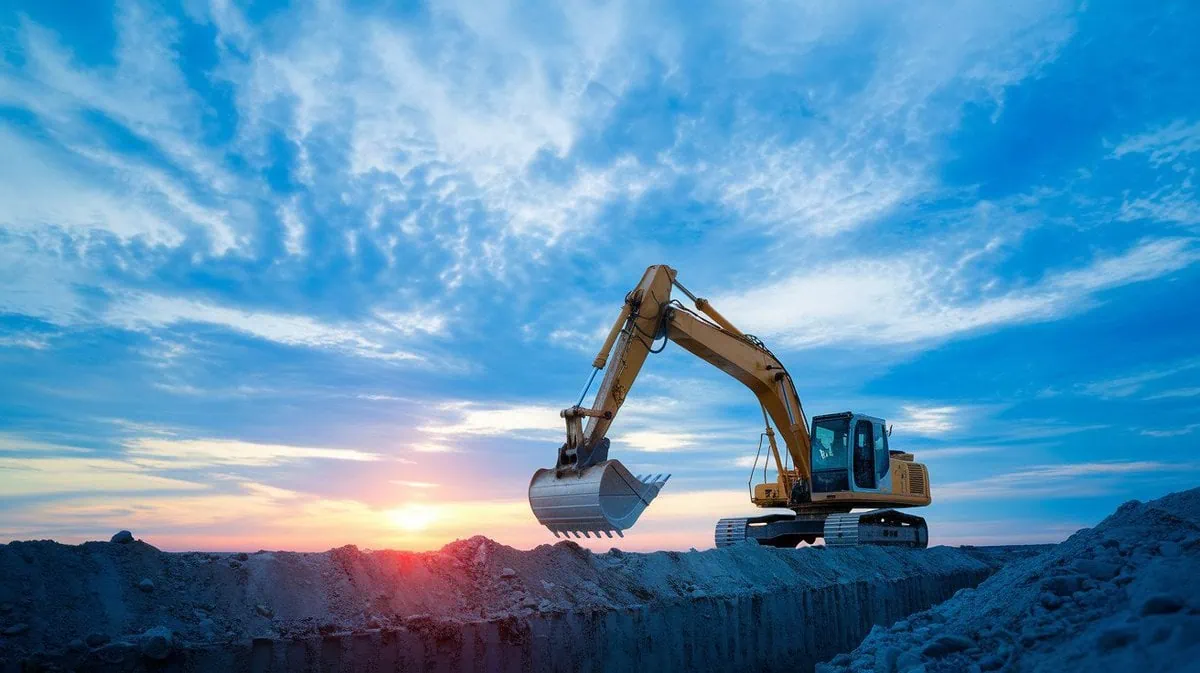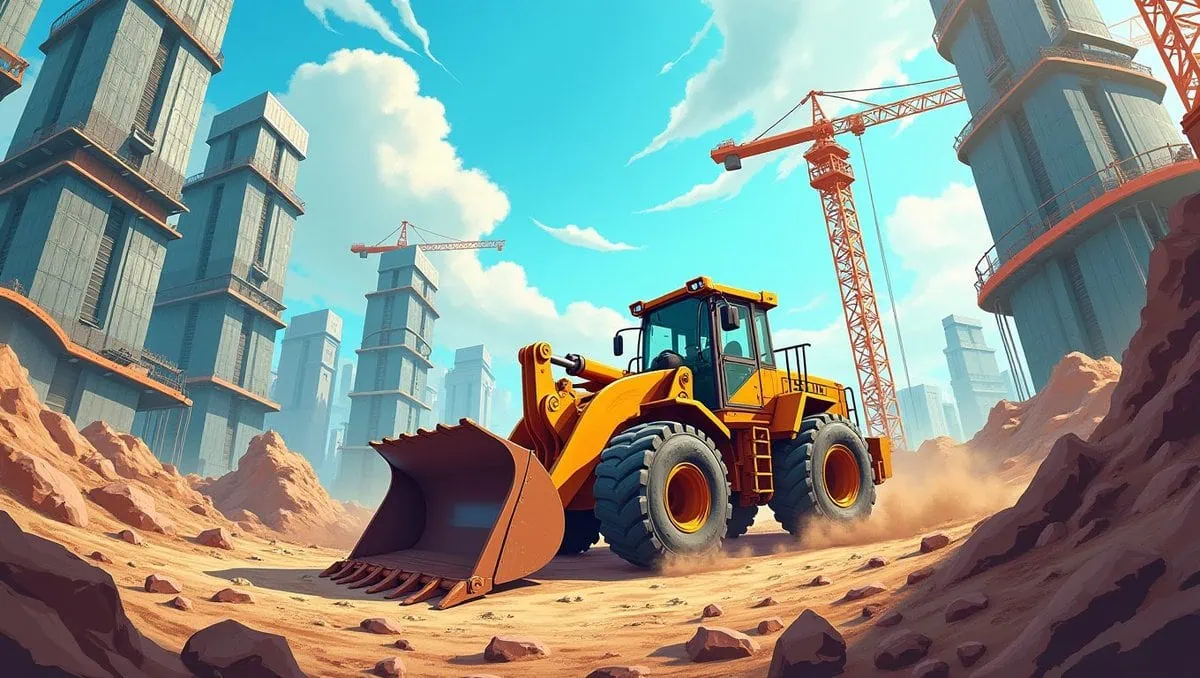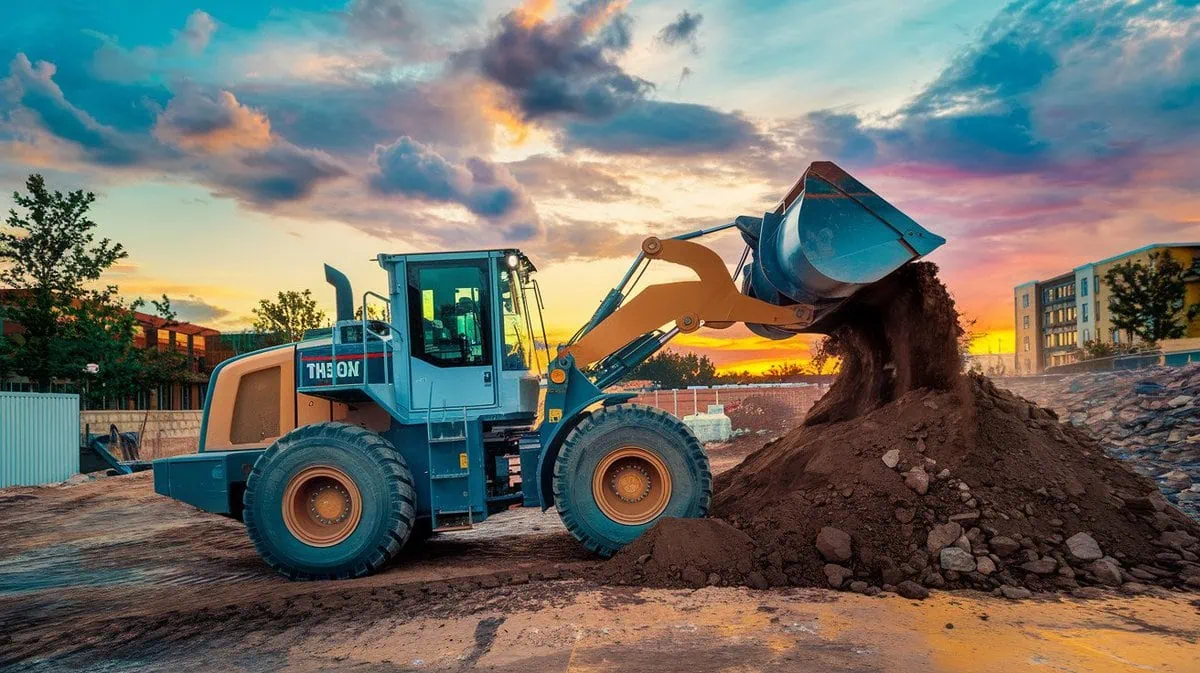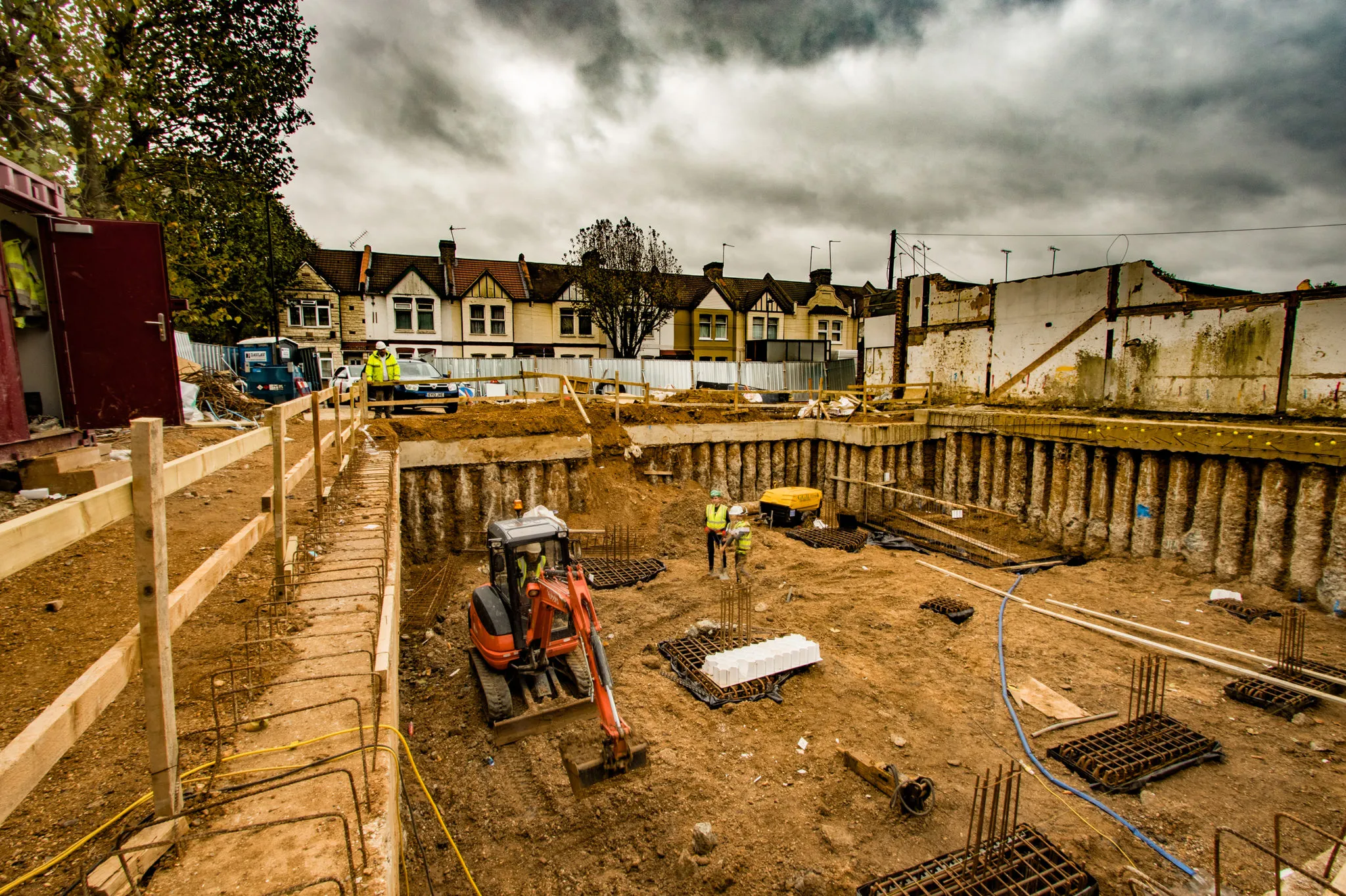Qu'est-ce qu'une tarière? Si vous devez percer un trou, une tarière est un équipement précieux qui rendra le travail plus rapidement et mieux. Alors, obtenez-en un pour votre mini-excavateur. Dans la plupart des cas, bien que vous deviez acheter une tarière en tant que pièce jointe distincte, alors déterminez cela dans votre budget lorsque vous envisagez un mini-achat d'excavateur. Une tarière peut transformer votre machine en une pièce d'équipement de creusement de trou de précision. Creusez des trous pour planter des arbres, l'installation de panneaux, la tranchée pour les lignes de services publics ou les trous pour les semelles rapidement et facilement. Il vous permet également de profiter pleinement de la puissance du mini-excavateur pour faire le travail pour vous.
Qu'est-ce qu'une tarière? C'est un attachement conçu pour s'adapter aux excavateurs, les aidant à effectuer des tâches de forage plus efficacement. Que vous percez des trous pour la construction, l'agriculture ou l'aménagement paysager, Qu'est-ce qu'une tarière fait référence à une perceuse en forme de spirale qui peut fonctionner à travers divers matériaux comme le sol, l'argile et même la roche. C’est l’outil idéal pour les applications qui nécessitent une précision et une profondeur. La tarière peut gérer des projets à grande échelle qui nécessitent du forage de plusieurs trous, tels que l'installation de clôtures ou le travail de fondation.
Maintenant tu sais Qu'est-ce qu'une tarière Regardons le travail qu'une tarière fait et comment vous pouvez joindre une tarière à votre mini-excavateur et commencez à l'utiliser dans votre entreprise.

1, qu'est-ce qu'une tarière?
Une tarière est une perceuse conçue comme un outil de forage de forme hélicoïdale pour ennuyer des trous dans une variété de matériaux. La machine alimente cet outil simple en le faisant tourner et en le nourrissant dans le matériau pour percer le trou. C’est aussi simple!
Qu'est-ce qu'une tarière? Un outil conçu pour faire des trous précis profondément dans les choses en tournant une lame en spirale qui pelle le matériau lorsqu'il coupe le trou. La tarière peut être utilisée dans la construction, l'agriculture ou une variété d'autres champs, selon la taille et le style.
Les tarières sont couramment utilisées pour percer des trous pour les poteaux de clôture, creuser des trous pour les travaux de fondation pour les ponts et les bâtiments, les arbres végétaux ou toute autre utilisation où vous avez besoin d'un trou profond et précis. Lorsque vous le mettez sur une excavatrice, vous pouvez effectuer ces tâches plus rapidement et avec une meilleure précision. Alors Yuo saura ce qu'est une tarière.
| Fonctionnalité | Description |
| Conception | Un perceur en spirale qui tourne pour creuser des trous. |
| Matériels | Utilisé sur divers matériaux, y compris le sol, l'argile et la roche. |
| Applications | Plantation d'arbres, post-installation de clôture et creusement pour les services publics. |

2, Quel est le but d'une tarière?
Le but principal d'une tarière est de créer rapidement des trous profonds et cohérents dans une grande variété de matériaux tels que la saleté, la roche ou l'argile. Ainsi, vous saurez donc Qu'est-ce qu'une tarière.
Donc Qu'est-ce qu'une tarière Et pourquoi utilisons-nous une tarière? Il peut percer des trous profonds et précis dans des choses pour diverses applications telles que la construction, l'agriculture ou les travaux de services publics. Il peut gérer les conditions du sol difficiles. Vous pouvez l'utiliser sur de minuscules petits emplois ou des projets massifs.
Lorsque vous pensez aux applications, que pouvez-vous faire avec une tarière? Plantez des arbres, creusez des trous pour les bases de petits bâtiments, creusez des trous pour planter des poteaux pour de nouveaux panneaux ou des tranchées pour poser des tuyaux et des câbles. Les rebondissements en spirale peuvent retirer le matériau du trou lors de ses perceuses, ce qui empêche le trou de se boucher et maintient le processus de forage en mouvement.
| Cas d'utilisation | Description |
| Agriculture | Cire des trous pour la plantation des cultures, des semis d'arbres ou des systèmes d'irrigation. |
| Construction | Cire des trous pour les fondations, les poteaux de clôture ou les installations de services publics. |
| Services publics | Installation de tuyaux, de câbles ou de systèmes souterrains avec précision. |

3, Qu'est-ce qu'une machine à tarif?
Une tarière est un équipement spécialisé conçu pour fonctionner avec une excavatrice. Il permet à une excavatrice de percer les trous rapidement et avec précision. Il fonctionne avec une puissance hydraulique qui fait pivoter le bit de tarière et peut percer des trous de 2 à 3 pieds de profondeur ou aussi profondément que vous voulez creuser un trou.
Qu'est-ce qu'une tarière machine, et comment ça marche? Il s'agit d'un outil hydraulique que vous pouvez attacher à une excavatrice. Vous contrôlez à quel point vous percevez la profondeur et à quelle vitesse vous forez. Ils sont parfaits pour les grands projets qui vous obligent à percer plusieurs trous.
Que faites-vous avec une machine à tarif? Vous utilisez une machine de tarière lorsque vous effectuez un forage à haute efficacité, comme l'installation d'une fondation, la fouille de trous de poteau pour une clôture ou le trench pour poser des tuyaux ou exécuter un autre type d'utilité. L'opérateur de machine peut contrôler la vitesse et la profondeur, ce qui permet à l'opérateur d'utiliser la machine dans une variété d'environnements. Ces machines sont pratiques dans des situations de sol résistantes. Imaginez quelque chose comme un tas de rochers avec un peu de saleté mélangée. Ce serait un bon endroit pour utiliser une tarière.
| Type de machine | Description |
| Tarif d'excavatrice | Une tarière hydraulique qui transforme l'excavatrice en une puissance de forage. |
| Tarière autonome | Une tarière autonome qui ne nécessite pas d'excavatrice mais qui est toujours alimentée hydrauliquement. |

4, qu'est-ce qu'une tarière pour l'agriculture?
Une tarière à la ferme est un foret spécialisé pour faire des trous profondément dans le sol à la ferme. Vous les utilisez pour planter des arbres, mettre un système d'irrigation ou créer des lits de sol.
En agriculture, Qu'est-ce qu'une colère? Des tarières sont utilisées pour planter des arbres, creuser des tranchées d'irrigation et préparer les lits du sol. Ils sont efficaces et peuvent être utilisés dans une variété de types de sols, y compris un sol dur et compacté.
Les tarières sont essentielles dans l'agriculture car ils aident à planter des arbres, à creuser des tranchées pour les lignes d'irrigation et à préparer le sol pour les cultures. Ils sont efficaces, rapides et réduisent le travail et le temps, permettant aux agriculteurs de se concentrer sur d'autres choses.
| Utilisation de l'agriculture | Description |
| Plantation d'arbres | Les tarières créent des trous uniformes et profonds pour la plantation d'arbres, assurant une croissance saine. |
| Irrigation | Creusez rapidement les tranchées pour les systèmes d'irrigation pour assurer même la distribution de l'eau. |
| Préparation du sol | Aide à créer des lits de plantation précis qui augmentent le rendement des cultures. |

5, quelle est la différence entre un exercice et une tarière?
En fin de compte, alors que les exercices et les tarières sont utilisés pour faire des trous, la différence entre les deux se résume à la conception de l'outil et à ce qu'elle est censée faire. Qu'est-ce qu'une tarière? Il est destiné à faire des trous plus profonds et plus profonds dans des matériaux plus doux, tandis qu'un foret est destiné à faire des trous plus petits dans des matériaux plus denses.
Alors, quelle est la différence entre un exercice et une tarière? La tarière est une conception en spirale qui est conçue pour éliminer le matériau lorsqu'elle est perforée, ce qui est parfait pour creuser des trous profonds et grands. Une perceuse, en revanche, est généralement utilisée pour des tâches plus petites et plus précises comme le forage à travers le métal ou le béton.
Les tarières excellent à passer par des matériaux doux à modérément durs comme le sol et l'argile. Ils sont excellents pour éliminer beaucoup de matériel à la hâte, c'est pourquoi ils sont l'outil préféré pour la construction et les projets agricoles. Une perceuse est un bien meilleur outil pour les petits travaux où plus de précision est nécessaire dans les matériaux plus durs.
| Outil | Matériel | Mieux pour |
| Percer | Métal, béton | Des trous précis et de petit diamètre. |
| Tarière | Sol, argile, sable | Des trous plus grands et plus profonds sur la Terre. |

6, comment une tarière s'attache-t-elle à une excavatrice?
Pour utiliser une tarière, vous l'attachez à une excavatrice via un couplage hydraulique, qui fournit de la puissance à la tarière pour le forage. Tu dois savoir Qu'est-ce qu'une tarière. L'excavatrice peut contrôler à la fois la vitesse de rotation et la profondeur de la tarière perce.
Donc Qu'est-ce qu'un Guger? C’est tout pour les tarières. Ils se branchent sur le système hydraulique de l'excavateur et lui permettent de tourner efficacement et de percer des trous. La puissance hydraulique de l'excavatrice entraîne la tarière, vous donnant un bon contrôle sur la profondeur et la vitesse à laquelle vous forez.
Sans outils spéciaux requis, attacher une tarière à une excavatrice est simple, rapide et facile. Une fois que vous l'avez attaché, vous utilisez le système hydraulique de l'excavateur pour contrôler la vitesse à laquelle vous forez et dans quelle direction vous pompez le matériau. C’est ce qui les rend si pratiques lorsque vous cherchez quelque chose d’efficace et quelque chose où vous avez un peu plus de précision.
| Processus d'attachement | Description |
| Couplage hydraulique | Connecte la tarière au bras d'excavatrice pour le fonctionnement. |
| Mécanisme de contrôle | Les commandes de l'opérateur sont la profondeur du forage et la vitesse de rotation via des commandes hydrauliques. |

7, avantages de l'utilisation d'une tarière avec votre excavatrice
Le gros avantage de l'utilisation d'une tarière avec une excavatrice est la possibilité de percer les trous rapidement, efficacement et précisément d'une manière que vous ne pourriez jamais faire à la main ou un autre type d'outil.
Quels sont les avantages et Qu'est-ce qu'une tarière? Une attachement de tarière pour une excavatrice vous permet d'être beaucoup plus efficace. Vous pouvez percer plus rapidement, plus précisément, et obtenir des trous plus profonds plus rapidement. Cela peut vous faire économiser une tonne de temps et de coûts de main-d'œuvre. De plus, vous n’avez pas à faire physiquement le trou.
L'ajout d'une tarière à votre arsenal rend également votre excavatrice plus polyvalente. Il peut vous aider à effectuer de nombreuses tâches dans diverses industries, notamment la construction, l'agriculture et les services publics. Fondamentalement, où vous pouvez pousser un trou dans le sol pour planter un arbre, installer un poteau de services publics, ou autre chose, vous le faites. Ce qui est plus frais: il est généralement profond et rapide.
| Avantage | Description |
| Versatilité | Permet aux excavateurs d'effectuer différents types de tâches. |
| Efficacité | Réduit considérablement le temps d'excavation. |
| Économies de coûts | Minimise les coûts de main-d'œuvre en accélérant le travail. |

8, quand utiliser une attache de tarière sur une excavatrice?
Les tarières sont idéales pour former des trous profonds et précis dans la saleté, l'argile ou quelque chose de similaire. Les tarières sont idéales pour les tâches où vous devez être précise et efficace lorsque vous creusez dans le sol.
Quel est le meilleur moment pour Utilisez une tarière? Vous les utilisez lorsque vous devez percer des trous, soit pour les fondations, la mise en place de poteaux, soit lorsque vous devez creuser une tranchée utilitaire efficacement et rapidement. Leur capacité à percer à des profondeurs dures et rapides en fait un outil préféré dans la construction, l'aménagement paysager et de nombreux projets agricoles où vous devez être «parfait et parfait» dans votre précision.
Que vous creusiez un trou dans le sol pour verser une fondation ou planter des arbres dans un grand champ, une tarière vous permet de le faire plus rapidement et avec plus de précision. Vous pouvez également les utiliser lorsque vous obtenez du sol dur ou de la saleté, y compris où vous devez passer à travers des rochers ou des sols fortement compactés. Il est beaucoup plus facile de percer un trou Utilisez une tarière que c'est de le creuser à la main.
| Application | Description |
| Creuser la fondation | Idéal pour les trous de fondation précis et profonds. |
| Installation de services publics | Parfait pour creuser des tranchées pour les services publics. |
| Travail agricole | Idéal pour la plantation d'arbres ou la préparation des lits. |

9, Comment maintenir une attachement de tarière pour les excavateurs?
La clé pour aider à assurer la longévité de votre tarière est de le maintenir correctement. Faire des travaux de maintenance maintenant peut vous faire économiser du temps et de l'argent plus tard dans des pannes et des réparations.
Pour vous aider à maintenir et à maintenir votre attachement de tarière mieux et plus longtemps, effectuez l'entretien pour nettoyer et inspecter les pièces.
Inspectez les dents ou les lames de tarière pour l'usure, nettoyez régulièrement les zones hydrauliques de vos composants hydrauliques détachables rapidement et lubrifiez toutes les pièces mobiles pour éviter l'usure, en s'assurant qu'ils durent aussi longtemps que possible. Après chaque installation de foret, prenez l'habitude de regarder autour du foret pour les dommages. Par exemple, recherchez des virages ou des fissures dans l'arbre de tarière, ce qui pourrait affecter ses performances. Aussi, retirez les lignes hydrauliques et assurez-vous qu'il n'y a pas de fuites et que tout est attaché en toute sécurité. Prenez soin de votre tarière et conservez-le là où il est hors de la météo lorsqu'il n'est pas utilisé.
Vous voulez l'empêcher de rouiller ou de permettre au temps de nuire à votre investissement. Prenez bien soin de votre équipement et cela prendra soin de vous.
Liste de contrôle de maintenance pour la pièce jointe de la tarière
| Tâche de maintenance | Fréquence | Importance | Remarques |
| Inspecter les dents de tarière | Toutes les 100 heures | Empêche l'usure et assure l'efficacité du forage | Remplacer si les dents montrent des signes d'usure |
| Système hydraulique propre | Après chaque utilisation | Assure un fonctionnement en douceur | Vérifiez les fuites et les débris dans les tuyaux |
| Lubrifier les pièces mobiles | Mensuel | Réduit la friction et l'usure | Utilisez un lubrifiant de haute qualité pour les pièces hydrauliques |
| Vérifiez l'arbre de tarif pour les fissures | Toutes les 200 heures | Empêche l'échec catastrophique | Inspectez soigneusement l'arbre pour les dommages |
| Téner de magasin correctement | Lorsqu'il n'est pas utilisé | Protège de la rouille et des dégâts météorologiques | Stocker dans un endroit sec et abrité |

10, pouvez-vous utiliser une tarière pour différents types de sols?
Les tarières permettent mieux dans une gamme plus large de conditions du sol.
Passons à la question suivante. À quel point une tarière est-elle polyvalente lors du forage dans différents types de sol? C’est une excellente question. Les tarières sont conçues pour bien fonctionner dans presque toutes les conditions, du sol mou aux matériaux encore plus durs comme la saleté et la roche. C'est une combinaison de la conception de la tarière et de la machine sur laquelle la tarière est montée qui lui permet de percer dans différents types de sol.
Choisissez la bonne tarière en fonction du type de sol que vous travaillez. Par exemple, des tarières lourdes sont nécessaires pour le sol rocheux, tandis qu'un plus léger est bien pour le sol doux et limoneux. Cette capacité à changer la tarière avec le sol en fait un outil clé pour vos efforts agricoles et de construction.
| Type de sol | Tarière recommandée |
| Terre douce | Tarière standard avec une conception en spirale modérée. |
| Sol rocheux | Tarière lourde avec des lames renforcées. |
| Terre argileuse | Auge avec une spirale large et large. |

11, Choisir la bonne tarière pour votre excavatrice
Le type de tarière que vous choisissez dépend adéquatement de ce dont vous avez besoin pour forer, du type de saleté dans lequel vous vous trouvez et de la taille du trou de forer.
Pour sélectionner la tarière parfaite dépend du travail que vous devez effectuer.
Parce que vous avez une variété d'options de vis type de tarière au travail que vous devez effectuer. Par exemple, si vous avez un sol doux ou une saleté lâche, une tarière standard va très bien fonctionner. Si vous traitez avec des rochers, de la saleté ou des sols compactés, vous aurez besoin d'une tarière lourde avec des bits renforcés et un moteur plus grand et plus puissant. La taille du trou que vous devez percer déterminera également la tarière; Des tarières plus petites pour des trous plus petits et des tarières plus grandes pour une excavation plus grande, plus large et plus profonde. Si vous devez percer un trou plus profond, une tarière conçue pour cela est un bien meilleur ajustement.
Assurez-vous qu'il est compatible avec votre excavatrice, y compris le débit hydraulique, la pression hydraulique et le type d'hydraulique que vous avez. L'utilisation de la bonne tarière rendra votre travail plus efficace, c'est pourquoi il est impératif de revoir vos besoins et de sélectionner la tarière parfaite parmi la pléthore de tarières disponibles.
Facteurs à considérer lors du choix d'une tarière:
| Facteur | Option recommandée | Pourquoi c'est important |
| Type de sol | Standard ou lourd | Choisissez en fonction de la densité et de la composition du sol |
| Taille du trou (diamètre) | Petit, moyen, grand | Choisissez en fonction du diamètre requis pour votre projet |
| Profondeur de forage | Standard ou profond | Assurez-vous que la tarière peut gérer la profondeur souhaitée du trou |
| Capacité hydraulique | Compatible avec l'excavatrice | Assurez-vous que le système hydraulique de votre excavatrice peut prendre en charge la tarière |
| Matériau de bit de tarif | Acier, en carbure | Sélectionnez en fonction des besoins de dureté du sol et de durabilité |
| Marque et qualité | Marques fiables (par exemple, Cat, Komatsu) | Assurer des performances et un soutien durables |
Résumé
Par la définition de Qu'est-ce qu'une tarière, ce qu'il fait et comment il fonctionne comme un attachement, vous pouvez améliorer considérablement votre capacité à fouiller. La pièce jointe de la tarière transforme votre excavatrice en un outil polyvalent pour éliminer une variété de tâches d'excavation rapidement et en toute sécurité sans ralentir votre dos, votre carte de crédit ou vos aides. Avec la précision d'une tarière et les compétences d'un opérateur, vous avez une machine polyvalente pour vous aider sur n'importe quel projet, petit ou grand.
De plus, si vous voulez plus d'informations sur:Convoyeur de tarière, tarière terrestre, tarière à vendre, tarif foret pour le sol, qu'est-ce qu'une tarière de plomberie, à quoi sert une tarière utilisée dans l'agriculture, ce qui est une tarière, à quoi sert une tarière utilisée, pour quoi est une tarière utilisée pour, Comment fonctionne une tarière, N'hésitez pas à contact avec nous.






